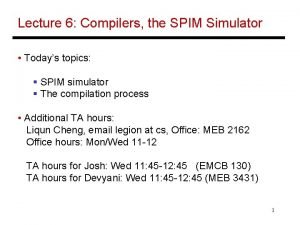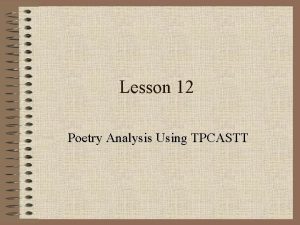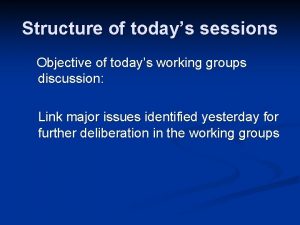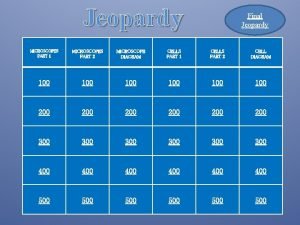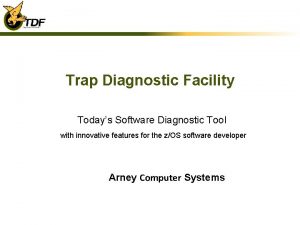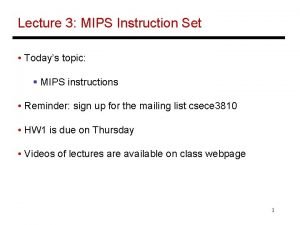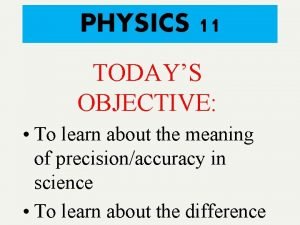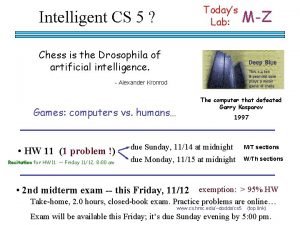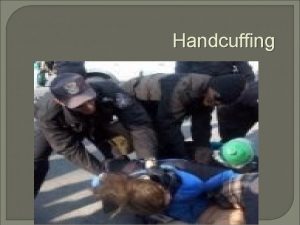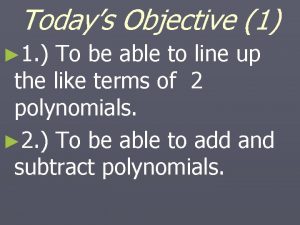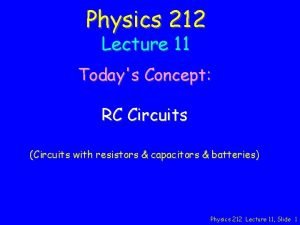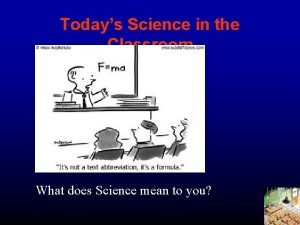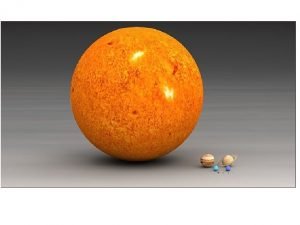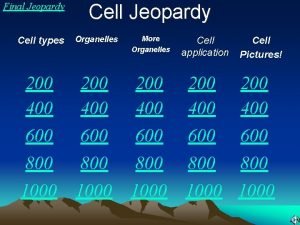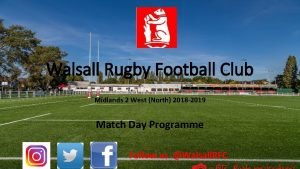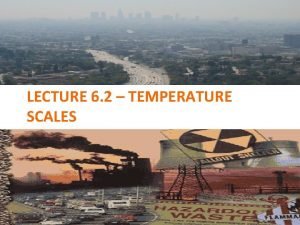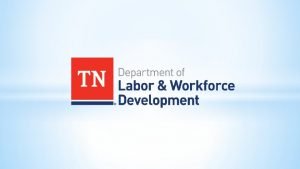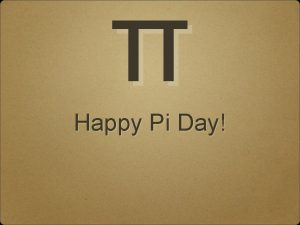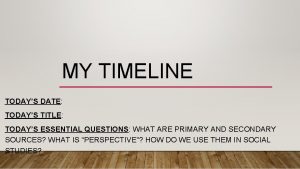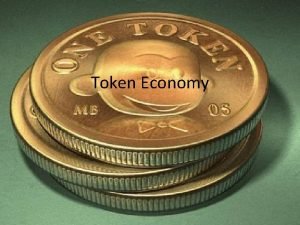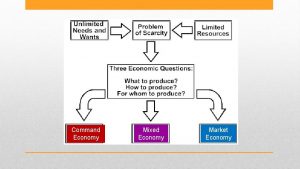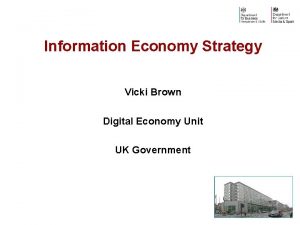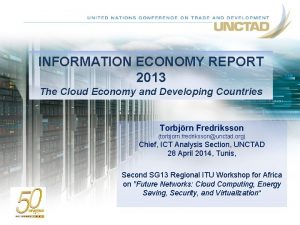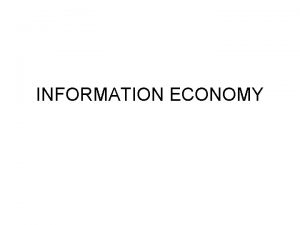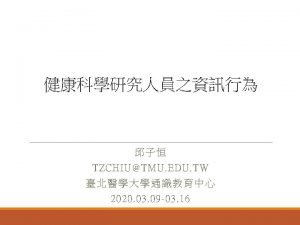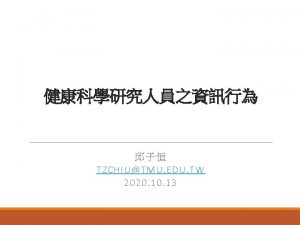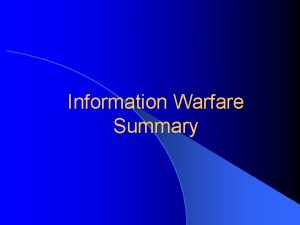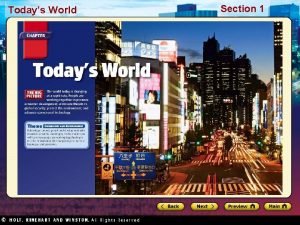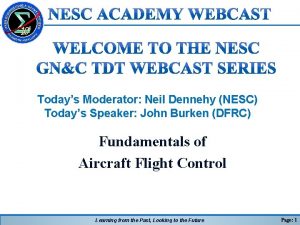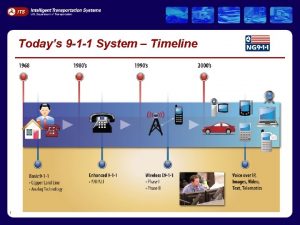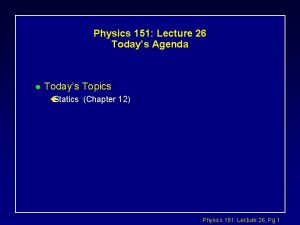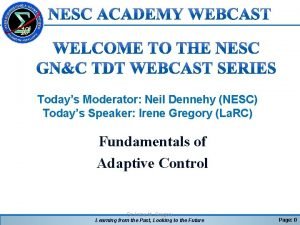Information economy n Todays economy u u u












































- Slides: 44


Information economy n Today’s economy u u u n manufacturing, distributing, and retailing items but also: publishing, banking, CDs, film making, bills…. main ‘product’ is creation and dissemination of information Future economy likely to be dominated by information u e. g. smart coffee machines, energy meters, wireless tags on groceries n Can represent in two ways: analog (items) and digital (bits) n Digital is better u u u computers manipulate digital information infinitely replicable networks can move bits efficiently n We need ways to represent all types of information as bits n Ways to move lots of bits everywhere, cheaply, and with quality of service

Common network technologies n Two successful computer networks u u n telephone network Internet What comes next? (“next-generation” Internet) u something like an ATM network or MPLS or IPv 6 or?

The Telephone Network


Is it a computer network? n Specialized to carry voice (also carries fax, modem calls) n Internally, uses digital samples n Switches and switch controllers are special purpose computers n Its design principles apply to more general computer networks Concepts n. Single basic service: two-way voice ulow end-to-end delay uguarantee n. Endpoints that an accepted call will run to completion connected by a circuit usignals flow both ways (full duplex) uassociated with bandwidth and buffer resources

n Fully connected core u u u simple routing telephone number is a hint about how to route a call hierarchically allocated telephone number space The pieces 1. End systems 2. Transmission 3. Switching 4. Signaling

1. End-systems n Transducers n Dialer n Ringer n Switchhook Since wires for reception and transmission are shared, the received signal is also transmitted, leading to echo. This is OK for short-distance calls, but for long distance calls, we need to put in echo cancellors. This is expensive and has other disadvantages

2. Transmission n Link characteristics u u information carrying capacity (bandwidth) propagation delay F time for electromagnetic signal to reach other end F light travels at 0. 7 c in fiber ~5 microseconds/km F NY to SF => 20 ms; NY to London => 27 ms attenuation F degradation in signal quality with distance F long lines need regenerators dispersion

Multiplexing n Trunks between central offices carry 100 s of conversations on the same wire n Frequency Division Multiplexing: bandlimit call to 3. 4 KHz and frequency shift onto higher bandwidth trunk; this is now obsolete n Time Division Multiplexing u u u first convert voice to samples each sample is rounded to the nearest quantization level (256 quantization levels, logarithmically spaced according to μ-law or A-law) => 1 sample = 8 bits of voice 8000 samples/sec => call = 64 Kbps output interleaves samples from n input streams (each with a 1 -byte buffer) need to serve all inputs in the time it takes one sample to arrive => output runs n times faster than input overhead bits mark end of frame

Transmission: Link technologies n Many in use today u u u n twisted pair coax cable terrestrial microwave satellite microwave optical fiber Popular today: fiber, satellite n. Cost is in installation, not in link itself. Builders can install twisted pair (CAT 5), fiber, and coax to every room. Even if only one of them used, still saves money. n For long distance, there is overprovision by up to ten times

Transmission: fiber optic links n Advantages: lots of capacity, nearly error free, very little attenuation, hard to tap. n. Three types ustep index (multimode) ugraded usingle index (multimode) mode n. Multimode: cheap, use LEDs, for short distances (up to a few kilometers) n. Single mode: more expensive, use lasers, for longer distances (up to hundreds of kilometers)

Transmission: satellites n Long distances at high bandwidth n Geosynchronous u u n 36, 000 km in the sky up-down propagation delay of 250 ms bad for interactive communication slots in space limited Nongeosynchronous (Low Earth Orbit or Medium Earth Orbit) u u u appear to move in the sky we need more of them handoff is complicated

3. Switching: what does a switch do? n Transfers data from an input to an output u u n many ports (up to 200, 000 simultaneous calls)` need high speeds Some ways to switch: u u space division time division (time slot interchange or TSI) n If inputs are multiplexed, we need a schedule n To build larger switches we combine space and time division switching elements

4. Signaling n Switching systems establish temporary circuits, and they have a switch and a switch controller. n Switch controller is in the control plane (it does not touch voice samples). n Manages the network: call routing (including call forwarding), billing (including collect calls), alarms (ring bell at receiver), directory lookup (for 800/888 calls) n. Switch controllers are special purpose computers, linked by their own internal computer network [the Common Channel Interoffice Signaling (CCIS) network]. Messages on CCIS conform to Signaling System 7 (SS 7) spec. n The switch controller keeps track of the state of every call through a state transition diagram

Challenges for the telephone network n Multimedia u u simultaneously transmit voice/data/video over the network people want it but existing network can’t handle it F bandwidth requirements F burstiness in traffic (TSI can’t skip input) n Flexibility n Backward compatibility of new services (huge existing infrastructure) n Regulation/Competition (future telephone networks are no longer monopolies; how to manage the transition? )

The Internet

What does it look like? n The Internet has doubled in size every year since 1969 n Soon, everyone who has a phone will also have an email account n Loose collection of networks organized into a multilevel hierarchy u 10 -100 machines connected to a hub or a router Fservice For providers also provide direct dialup access over a wireless link u 10 s of routers on a department backbone u 10 s of department backbones connected to campus backbone u 10 s of campus backbones connected to regional service providers u 100 s u 10 s of regional service providers connected by national backbone of national backbones connected by international trunks

Example of message routing # traceroute henna. iitd. ernet. in traceroute to henna. iitd. ernet. in (202. 141. 64. 30), 30 hops max, 40 byte packets 1 UPSON 2 -NP. CIT. CORNELL. EDU (128. 84. 154. 1) 1 ms 2 HOL 1 -MSS. CIT. CORNELL. EDU (132. 236. 230. 189) 3 CORE 1 -MSS. CIT. CORNELL. EDU (128. 253. 222. 1) 4 CORNELLNET 1. CIT. CORNELL. EDU (132. 236. 100. 10) 4 ms 3 ms 4 ms 5 ny-ith -1 -H 1/0 -T 3. nysernet. net (169. 130. 61. 9) ny-ith-1 -H 1/0 -T 3. 5 ms 4 ms 6 ny-ith -2 -F 0/0. nysernet. net (169. 130. 60. 2) ny-ith-2 -F 0/0. 7 ny-pen -1 -H 3/0 -T 3. nysernet. net (169. 130. 1. 121) ny-pen-1 -H 3/0 -T 3. 8 sl-pen -21 -F 6/0/0. sprintlink. net (144. 228. 60. 21) sl-pen-21 -F 6/0/0. 9 core 4 -hssi 5 -0. West. Orange. mci. net (206. 157. 77. 105) 2 ms 3 ms 4 ms 21 ms border 7 -fddi-0. West. Orange. mci. net (204. 70. 64. 51) 12 vsnl-poone-512 k. West. Orange. mci. net (204. 70. 71. 90) 13 202. 54. 13. 170 (202. 54. 13. 170) 14 144. 16. 60. 2 (144. 16. 60. 2) 15 henna. iitd. ernet. in (202. 141. 64. 30) 1349 ms 1380 ms 3 ms 19 ms 16 ms 11 1375 ms 21 ms 2 ms 4 ms core 2. West. Orange. mci. net (204. 70. 4. 185) core 2. West. Orange. mci. net 629 ms 2 ms 10 628 ms 16 ms 40 ms 20 ms 34 ms 20 ms 24 ms 26 ms 21 ms 623 ms 21 ms 639 ms 628 ms 1343 ms 1405 ms 36 ms 1368 ms 621 ms

What lies at the heart: Packets n Self-descriptive data (packet = data + header) n Packets vs. samples (as in circuit switching) u samples are not self descriptive; to forward a sample, we have to know where it came from and when; we can’t store it! Store and forward n Headers allows us to forward packets when we want (e. g. letters at a post office) n Efficient use of critical resources n Three problems: a) hard to control delay within network, b) switches need buffers c) convergence of flows can lead to congestion.











Routing n How to get to a destination given its IP address? n. Strictly speaking, you need next hop information for every node in the network (10’s of millions). n. With hierarchical design, we need next hop information for the nodes in the same sub-network (that’s OK), and also next hop information for every network in the Internet (> 80, 000 now) n. Instead, keep detailed routes only for local neighborhood; for unknown destinations, use a default router n. Reduces size of routing tables at the expense of non-optimal paths

Endpoint control n Key design philosophy u u u n Layer above IP compensates for network defects u n do as much as possible at the endpoint relatively dumb/unreliable network exactly the opposite philosophy of telephone network Transmission Control Protocol (TCP) Can run over any available link technology F F but no quality of service modification to TCP requires a change at every endpoint

Challenges n IP address space shortage u u u n Decentralization u u u n because of free distribution of inefficient Class B addresses decentralized control => hard to recover addresses, once handed out even small devices will soon need an IP address allows scaling, but makes reliability next to impossible cannot guarantee delay, bandwidth or buffer resources hard to guarantee security: there is no control over who can join! encryption is a partial solution, but who manages keys? no uniform solution for accounting and billing (can’t even reliably identify users) no equivalent of yellow pages (hard to reliably discover a user’s email address) nonoptimal routing Multimedia u u requires network to support quality of service of some sort (hard to integrate into current architecture; store-and-forward => shared buffers => traffic interaction => hard to provide service quality) requires user to signal to the network what it wants F but Internet does not have a simple way to identify streams of packets F nor are routers required to cooperate in providing quality F and there is no pricing!

ATM Networks

Why ATM networks? n Different information types require different Qo. S n Telephone networks support a single Qo. S (and at a high cost) n Internet supports no Qo. S (but it is flexible and cheap) n ATM networks are meant to support a range of service qualities at a reasonable cost. Potentially can replace both the telephone network and the Internet Design goals n Providing end-to-end Qo. S n High bandwidth n Scalability n Cost-effective

How far along are we? n Basic architecture has been defined n But delays have resulting in ceding desktop to IP n We may never see end-to-end ATM u u n but its ideas continue to powerfully influence design of nextgeneration Internet technology + ATM philosophy Note--two standardization bodies u u ATM Forum International Telecommunications Union-Telecommunications Standardization Sector (ITU-T)

Concepts 1. Virtual circuits 2. Fixed-size packets (cells) 3. Small packet size 4. Statistical multiplexing 5. Integrated services Together can carry multiple types of traffic with end-to-end quality of service

1. Virtual circuits n Telephone network operates in synchronous transmission mode u u u the destination of a sample depends on where it comes from, and when it came idle users consume bandwidth links are shared with a fixed cyclical schedule => quantization of link capacity (can’t ‘dial’ bandwidth) n ATM uses packets (header indicates destination =>arbitrary schedule and no wasted bandwidth) n Two ways to use packets u u carry entire destination address in header carry only an identifier Data Sample VCI Addr. Data ATM cell Datagram

Virtual circuits (contd. ) n VC id’s save on header space n But need to be pre-established n We also need to switch Ids at intermediate points n Need translation table and connection setup

Features of virtual circuits n All packets must follow the same path n Switches store per-VCI state u can store Qo. S information n Signaling => separation of data and control n Small Ids can be looked up quickly in hardware u n Setup must precede data transfer u n n harder to do this with IP addresses delays short messages Switched vs. Permanent virtual circuits Ways to reduce setup latency u u u preallocate a range of VCIs along a path (Virtual Path) send data cell along with setup packet dedicate a VCI to carry datagrams, reassembled at each hop

2. Fixed-size packets n Advantages u u u n Simpler buffer hardware Simpler line scheduling Easier to build large parallel packet switches Disadvantages u u segmentation and reassembly cost last unfilled cell after segmentation wastes bandwidth 3. Small packet size n At 8 KHz, each byte is 125 microseconds n The smaller the cell, the less an end user has to wait to fill it n packetization delay The smaller the packet, the larger the header overhead u n Standards body balanced the two to prescribe 48 bytes + 5 byte header = 53 bytes u => maximal efficiency of 90. 57%

4. Statistical multiplexing n Suppose cells arrive in bursts u u each burst has 10 cells evenly spaced 1 second apart gap between bursts = 100 seconds n Average cell rate=0. 09 cells/sec. Peak cell rate=1 cell/sec n What should be service rate of output line? We can trade off worst-case delay against speed of output trunk n Statistical Multiplexing Gain (SMG)= sum of peak input / output rate n Whenever long term average rate differs from peak, we can trade off service rate for delay

5. Integrated service n Traditionally, voice, video, and data traffic on separate networks n How do ATM networks allow for integrated service? u u lots of bandwidth: hardware-oriented switching support for different traffic types F Signaling and resource reservation F admission control F easier scheduling

Challenges n Quality of service (defined, but not used) n Scaling (little experience) n Standardization (political and slow) n IP u u a vast, fast-growing, non-ATM infrastructure interoperation is difficult, because of fundamentally different design philosophies F connectionless vs. connection-oriented F resource reservation vs. best-effort
 Athens vs sparta differences
Athens vs sparta differences Todays objective
Todays objective Todays globl
Todays globl Todays vision
Todays vision Todays jeopardy
Todays jeopardy For today's meeting
For today's meeting Todays sabbath lesson
Todays sabbath lesson Todays agenda
Todays agenda Todays objective
Todays objective Todays with apostrophe
Todays with apostrophe Todays final jeopardy
Todays final jeopardy Todays final jeopardy question
Todays final jeopardy question Todays objective
Todays objective Todays final jeopardy
Todays final jeopardy Todays price of asda shares
Todays price of asda shares Todays objective
Todays objective Todays software
Todays software Date frui
Date frui Whats todays wordlw
Whats todays wordlw Todays objective
Todays objective Todays lab
Todays lab Olongman
Olongman Welcome to sabbath school
Welcome to sabbath school Todays jeopardy
Todays jeopardy Standing handcuffing techniques
Standing handcuffing techniques Todays worldld
Todays worldld Today's objective
Today's objective Todays concept
Todays concept Todays class com
Todays class com Todays science
Todays science Todays objective
Todays objective Todays objective
Todays objective Chapter 13 marketing in todays world
Chapter 13 marketing in todays world Planetary positions today
Planetary positions today Todays generations
Todays generations Organelle that modifies packages and transports
Organelle that modifies packages and transports Todays class
Todays class Veseyans rfc
Veseyans rfc Good evening student
Good evening student Todays weather hull
Todays weather hull Whats thermal energy
Whats thermal energy Todays whether
Todays whether Whats todays temperature
Whats todays temperature Todays objective
Todays objective Todays plan
Todays plan


